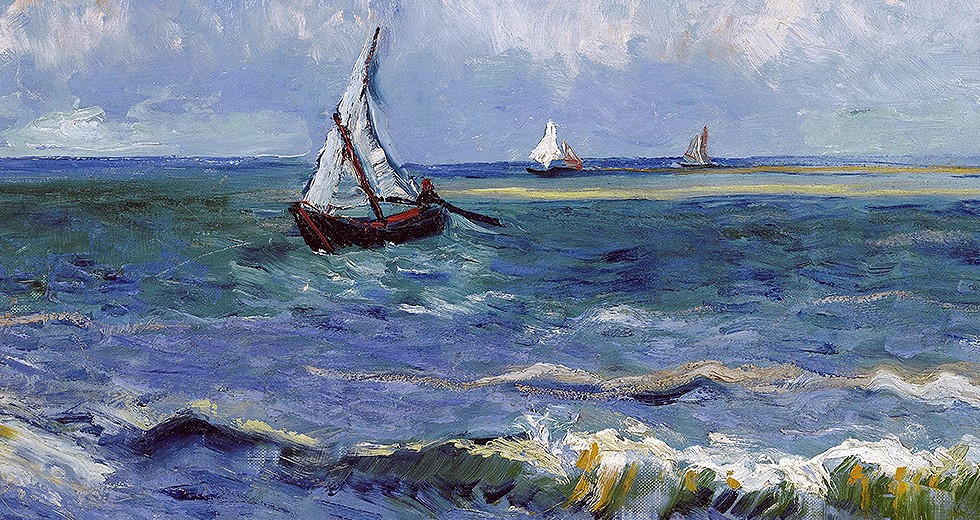
For a couple of years in my 20s, I listened to La mer daily. I was obsessed with it in the same way a twentysomething man would be obsessed with a twentysomething woman. That would come later, but for a time I was single, alone, and in the thrall of orchestral music — especially Debussy’s. I had explored Mahler and Strauss, owned a boxed set of the Beethoven symphonies, but sometime around 1968, I heard a live performance of La mer, with Jean Martinon conducting the Chicago Symphony Orchestra.
 Debussy spoke directly to me at that Friday afternoon concert. That’s when I settled on La mer as the soundtrack for that period of my life. I was mesmerized by its colors and textures.
Debussy spoke directly to me at that Friday afternoon concert. That’s when I settled on La mer as the soundtrack for that period of my life. I was mesmerized by its colors and textures.
That’s what the piece is all about: color and texture. It’s program music without a program — no heroes or warriors, no love interests, no redemption or narrative. There are no moral lessons to be drawn. Debussy needs none of that.
The CSO will perform Debussy’s La mer, under Riccardo Muti, in concerts Sept. 25-30.
His La mer, which is full of exotic scales, Technicolor orchestration and harmonic sophistication, achieves something visceral and elemental. It’s beautifully nuanced music without a trace of superficiality. It goes right to the core in us: All life came from the sea, and on some level, it is the sea that we all yearn for. Like the sea, Debussy’s music shimmers, roils and soothes.
The work premiered in 1905, well before Stravinsky’s Rite of Spring and before Schoenberg’s break with tonality, yet it is thoroughly 20th century. In it, Debussy uses his unique musical language to portray the sea. La mer accomplishes this as well as any painting by J.M.W. Turner (whose work Debussy admired) or Winslow Homer.
Debussy called the work “three symphonic sketches.” “From Dawn to Noon on the Sea,” “Play of the Waves” and “Dialogue Between the Wind and the Waves.” One month before the work had its premiere in Paris on Oct. 15, 1905, Debussy wrote to his publisher Jacques Durand: “The Sea has been very good to me. She has shown me all her moods.”
And Debussy, in turn, has shown them to us.
Chicago-based writer Jack Zimmerman has authored a couple of novels, countless newspaper columns and was the 2012 recipient of the Helen Coburn Meier and Tim Meier Arts Achievement Award.
PHOTOS: A detail from Vincent van Gogh’s Seascape Near Les Saintes-Maries-de-la-Mer (1888). INSET: Claude Debussy.